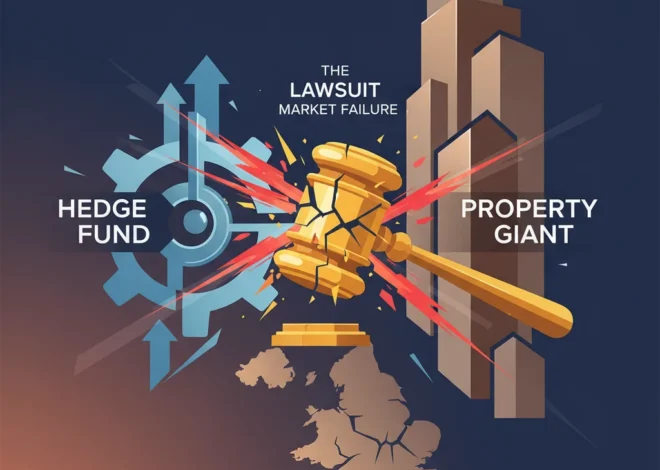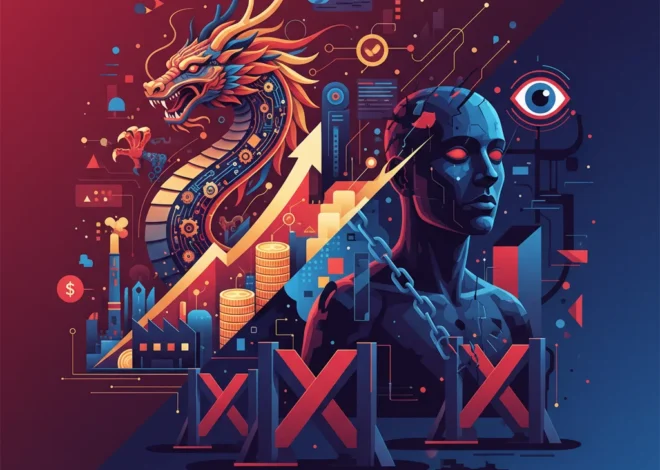
Decoding Bitcoin’s Sideways Shuffle: Why Price Compression Could Signal a Major Breakout
In the dynamic world of finance and investing, few assets command as much attention—and generate as much debate—as Bitcoin. After a period of exhilarating highs, the market has entered what many perceive as a lull. The price action has become less dramatic, trading within a relatively narrow band. For the casual observer, this might seem like a period of stagnation or indecision. But for seasoned analysts and institutional players, this “sideways shuffle” is anything but boring. It’s a classic sign of price compression, a phenomenon that often precedes a significant and powerful move.
This period of low volatility, far from being a red flag, could be interpreted as a textbook accumulation phase. This is a critical stage in any market cycle where sophisticated investors—often called “smart money”—strategically acquire an asset while market sentiment is neutral or bearish. According to technical analysis from market experts, the current market structure suggests that a coiled spring is being wound tight. The key question on every investor’s mind is: in which direction will it spring loose?
In this deep dive, we will unpack the mechanics of price compression, explore the psychology behind an accumulation phase, and connect these technical signals to the broader macroeconomic landscape. We’ll examine what this means for investors, the future of financial technology, and why this quiet period could be the prelude to Bitcoin’s next major chapter.
The Coiled Spring: Understanding Price Compression and Volatility Squeeze
Imagine a powerful spring being slowly compressed. As more pressure is applied, the potential energy stored within it increases exponentially. When that pressure is finally released, the spring doesn’t just expand—it explodes with force. This is a perfect analogy for what happens during a period of price compression in financial markets.
In technical terms, this is often identified using indicators like Bollinger Bands. These bands, which measure market volatility, expand when prices are swinging wildly and contract when the market calms down. A “Bollinger Band Squeeze,” as it’s known, signifies a sharp drop in volatility. Recent chart analysis highlights that Bitcoin’s Bollinger Bands have been narrowing significantly, indicating the market is consolidating and building energy for its next directional move. This is a classic pattern seen across all asset classes, from the stock market to commodities, and it puts traders on high alert for a “breakout.”
This compression phase serves a crucial function: it allows the market to establish a fair value area, shake out weak hands, and build a solid foundation of support or resistance. It’s a battle of attrition between buyers and sellers, and the eventual winner of this battle will dictate the market’s next major trend.
Quantum vs. AI: The Trillion-Dollar Race to Redefine the Global Economy
The Psychology of Accumulation: Who Is Quietly Buying Bitcoin?
If price compression describes the “what,” the accumulation phase describes the “who” and “why.” Rooted in market cycle theories like the Wyckoff Method, accumulation is the phase where informed investors and institutions begin to build their positions. They do so quietly, without causing major price spikes, often absorbing the supply from retail investors who are either bored, fearful, or convinced the upward trend is over.
This process is subtle. It’s characterized by a price floor that stubbornly refuses to break, even in the face of seemingly negative news. Each dip is met with steady buying pressure, but not enough to trigger a full-blown rally. This is the signature of large players who must fill substantial orders without moving the market against themselves. The growth of regulated fintech products like Bitcoin ETFs has made it easier than ever for these large entities to gain exposure, potentially fueling this underlying demand.
To better understand this market dynamic, let’s compare the key characteristics of an accumulation phase with its opposite, a distribution phase.
Below is a table outlining the distinct features of these two critical market phases:
| Characteristic | Accumulation Phase (Smart Money Buying) | Distribution Phase (Smart Money Selling) |
|---|---|---|
| Price Action | Sideways or gently grinding upwards within a defined range. Dips are quickly bought. | Sideways or gently grinding downwards. Rallies are quickly sold off (“bull traps”). |
| Volatility | Tends to decrease over time as the range tightens (price compression). | Can be choppy and erratic, with sharp up-moves designed to attract buyers before selling. |
| Volume | Volume may be low overall but often spikes on down-moves as large buyers absorb selling pressure. | Volume often spikes on up-moves as large sellers distribute their holdings to eager buyers. |
| Market Sentiment | Generally neutral, bearish, or simply “boring.” Media attention wanes. | Extremely bullish and euphoric. Everyone believes the price can only go up. |
The Macroeconomic Backdrop: Why Bitcoin Isn’t Trading in a Vacuum
No asset, not even a decentralized one like Bitcoin, exists in isolation. Its price action is deeply intertwined with the global economy, monetary policy, and the evolving landscape of traditional banking and finance.
Several macroeconomic factors are creating tailwinds for Bitcoin’s narrative as a store of value and a hedge against inflation:
- Persistent Inflation: As central banks grapple with inflation, investors are increasingly looking for assets with a finite supply. Bitcoin’s programmatic scarcity (a hard cap of 21 million coins) presents a stark contrast to the endless printing of fiat currencies.
- Geopolitical Instability: In times of global uncertainty, capital seeks safety. Bitcoin’s decentralized, borderless nature makes it an attractive alternative for those looking to preserve wealth outside of traditional, government-controlled systems.
- Institutional Integration: The most significant shift in this market cycle is the deep integration of Bitcoin into mainstream financial technology. The approval of spot Bitcoin ETFs has unlocked a firehose of capital from pension funds, endowments, and asset managers, fundamentally changing the demand-side equation. This represents a structural shift, not a temporary trend.
The performance of the traditional stock market also provides context. While Bitcoin sometimes trades in correlation with high-growth tech stocks, it can also diverge, acting as a non-correlated asset that provides portfolio diversification. Understanding these shifting correlations is key to sophisticated asset allocation in today’s complex economic environment.
Implications for Investors and Business Leaders
So, what are the actionable takeaways from this period of compression and accumulation? The implications differ for various stakeholders.
For Investors:
Patience is paramount. Consolidation phases can test an investor’s resolve. Strategies like Dollar-Cost Averaging (DCA) can be particularly effective during these times, allowing one to build a position at an average price without trying to time the exact bottom. It’s also a critical time to set alerts for a potential breakout from the established price range. A decisive move above the range’s resistance or below its support will likely signal the start of the next major trend in trading.
For Business Leaders:
For leaders in the blockchain and fintech sectors, this phase is a signal of market maturation. The steady institutional demand indicates that Bitcoin is being treated as a serious, long-term asset. Companies considering adding Bitcoin to their corporate treasury should view these accumulation periods as potential strategic entry points. Furthermore, understanding these market cycles is crucial for forecasting consumer and enterprise adoption of blockchain-based technologies.
The ongoing integration of digital assets into the global financial system is not a question of ‘if’ but ‘when and how.’ The current quiet phase is a foundational one, laying the groundwork for the next wave of innovation and adoption in the digital economics space.
The New Atomic Balance Sheet: How a Looming Arms Race Impacts Your Investment Portfolio
Conclusion: The Calm Before the Potential Storm
The current Bitcoin market may lack the headline-grabbing fireworks of a full-blown bull run, but what’s happening beneath the surface is profoundly important. The ongoing price compression, characterized by a tightening of Bollinger Bands, is a technical signal that a significant expansion in volatility is on the horizon. When combined with on-chain data and the macroeconomic context, the evidence strongly suggests this is an accumulation phase, where long-term conviction is quietly overpowering short-term speculation (source).
While no outcome is guaranteed, the confluence of institutional adoption, favorable macroeconomic narratives, and classic technical patterns presents a compelling case for a future upward resolution. This period of consolidation is healthy and necessary for building a sustainable long-term trend. For investors, traders, and business leaders, the message is clear: pay close attention. The quiet market of today may be the launching pad for the explosive trend of tomorrow, further cementing the role of blockchain technology in the future of global finance.


